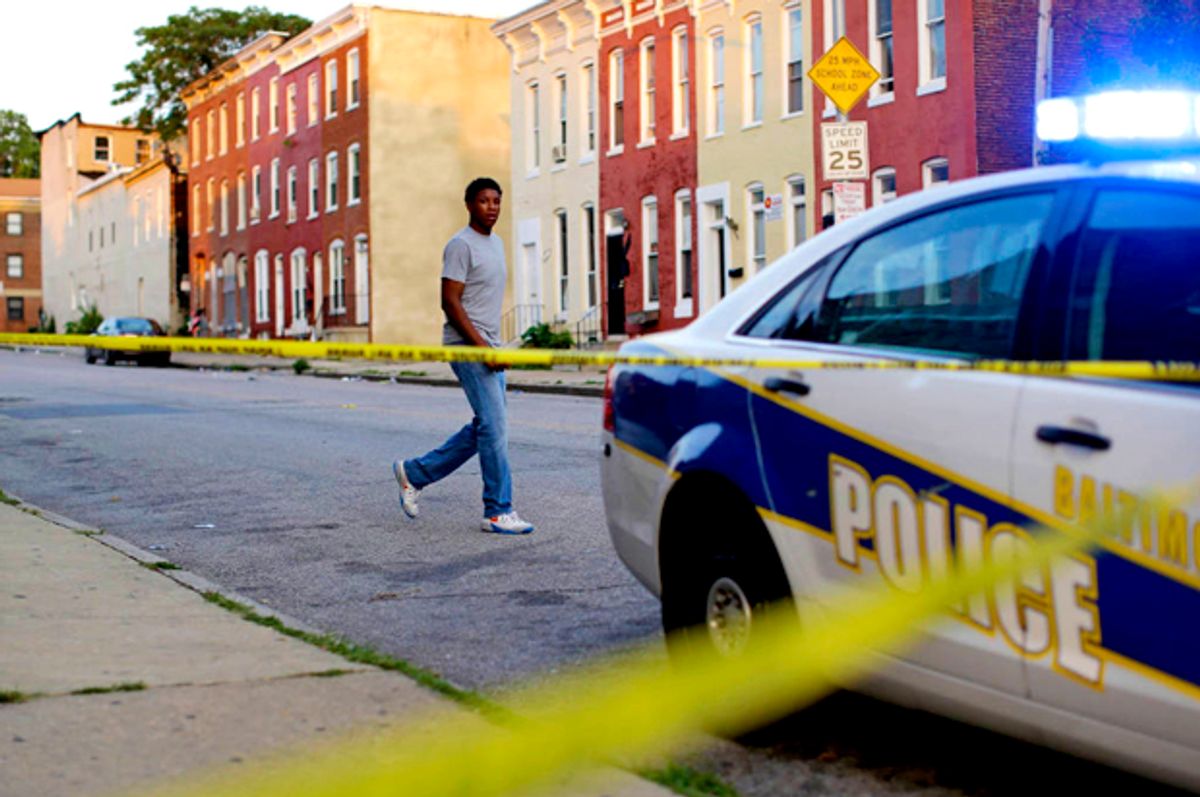 On the subject of crime, there is good news and bad. Reports by both the FBI and the Bureau of Justice Statistics show that crime has decreased in the past 25 years in the U.S. Violent crime fell between 48% and 74% since 1993, based on the agencies’ measures, respectively. Property crime has fallen sharply, too: the FBI estimates a drop of 48% between 1993 and 2016, and BJS reports 66%.
On the subject of crime, there is good news and bad. Reports by both the FBI and the Bureau of Justice Statistics show that crime has decreased in the past 25 years in the U.S. Violent crime fell between 48% and 74% since 1993, based on the agencies’ measures, respectively. Property crime has fallen sharply, too: the FBI estimates a drop of 48% between 1993 and 2016, and BJS reports 66%.
While the organizations have different parameters for measuring crime, their results show the same conclusion: Americans are safer than they have been in a quarter century. So why do Americans say crime is a bigger concern than ever before?
A study at Pew Research Center shows the juxtaposition between the reality of falling crime rates and Americans' growing fear of crime. “In 17 Gallup surveys conducted since 1993, at least six in 10 Americans said there was more crime in the U.S. compared with the year before, despite the generally downward trend in national violent and property crime rates during much of that period.”
“Pew Research Center surveys have found a similar pattern. In a survey in late 2016, 57% of registered voters said crime in the U.S. had gotten worse since 2008, even though BJS and FBI data show that violent and property crime rates declined by double-digit percentages during that span.”
To view it differently, as Christian Science Monitor writes, “people became 62 percent less likely to become the victim of a violent crime between 1993 and 2014. The number of violent-crime victims per 1,000 persons age 12 or older dropped from 29.3 to just 11.1 in that period, according to Bureau of Justice Statistics.”
So why are Americans more fearful of crime than ever? There are two likely reasons: the over-reporting of crime by national and local news media, and politically motivated lies spread by conservative politicians.
The 24-hour television news media fills open-air time with salacious reports of violent crimes that are disproportionate to actual crimes stats. Experts confirm this: in their book Crime, Media, and Reality: Examining Mixed Messages About Crime and Justice in Popular Media, Venessa Garcia and Samantha G. Arkerson write, “with the exception of weather and traffic, the media dedicate more time to crime than other topics, including sports.”
Crime stories get viewers and clicks like no other vertical, bringing in crucial vital advertising revenue. This has a direct impact on public perception. George Washington University professor Robert Entman and University of Illinois-Chicago professor Andrew Rojecki came to the same conclusion in their book The Black Image in the White Mind. As the Chicago Reporter summarizes, Entman and Rojecki “found that the excessive coverage of crime on television news tends to create a misperception among the public that crime is a bigger problem than it really is. Even in periods when reported crime actually is down.”
Race can’t be separated from conversations about how news media report on crime. A Media Matters report found that in New York, local news sites disproportionately report on crime stories featuring African American suspects. Over-reporting of crime contributes to many Americans' racialized views of who commits crime, and where and why. As the Chicago Reporter writes, "Too often, according to Entman and Rojecki, that 'B' roll in TV news — the images that are used to show the story while the reporter in voiceover tells the story — tends to include images of African Americans or Latinos in prison settings. More specifically, according to a study by professor Travis Dixon of the University of California at Los Angeles, mug shots and orange jumpsuits are more likely to be shown in TV reports when the accused is a person of color."
Much blame for the public's misconception about crime rates also falls on Republican politicians who continually push the narrative that crime is a growing problem and that American cities are hotbeds of violence. While they’ve eased up on this line over the past few years, in light of growing awareness of the racial impact of mass incarceration, and some Republicans have distanced themselves from the "tough on crime" years, dinosaurs like Attorney General Jeff Sessions continue to push tough-on-crime measures like mandatory minimum sentencing laws, despite the fact that most Americans are against them.
It’s easy to see that they do this for political purposes. Take Trump and Paul Ryan’s insistence that banning immigration from Latin America will limit the presence of gangs like MS-13. Other politicians have caught on to the tactic of heightening crime stories to push for anti-immigrant policy; in New Jersey last year, gubernatorial candidate Kim Guadagno claimed in an attack ad that her opponent, now governor Phil Murphy, would safeguard rapists and criminals in his support of sanctuary cities. In Iowa, Congressman Steve King made the outrageous claim that undocumented immigrants who come from countries with high murder rates present a danger to Americans. And in the recent Virginia gubernatorial race, Ed Gillespie ran an attack ad accusing opponent and now-governor Ralph Northam of “letting illegal immigrants who commit crimes back on the street, increasing the threat of MS-13.”
Most people believe what they’re told. As long as mainstream news media and elected officials continue to push the narrative that crime is on the rise, many Americans will continue to fall for their fear-mongering.



Shares